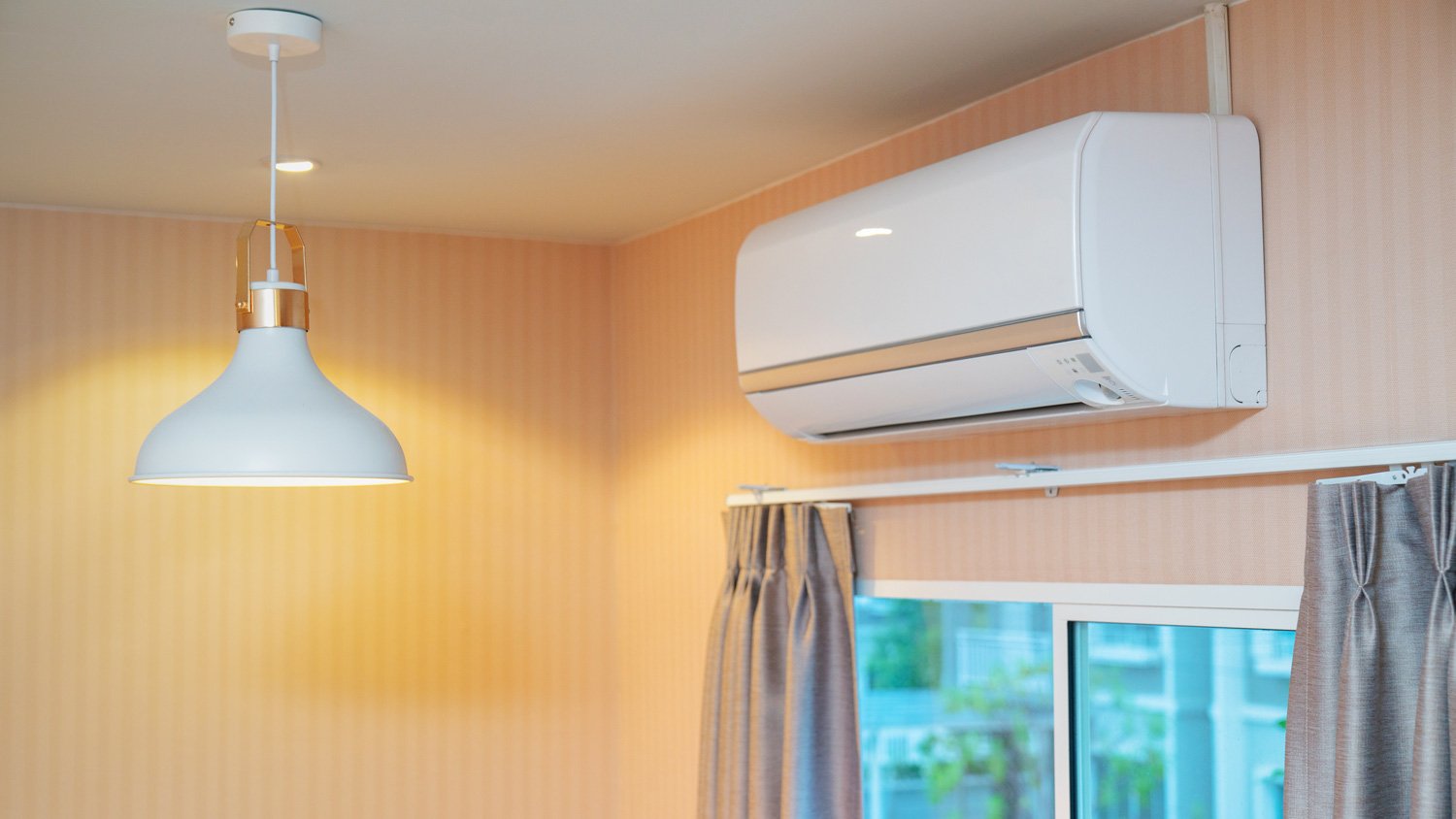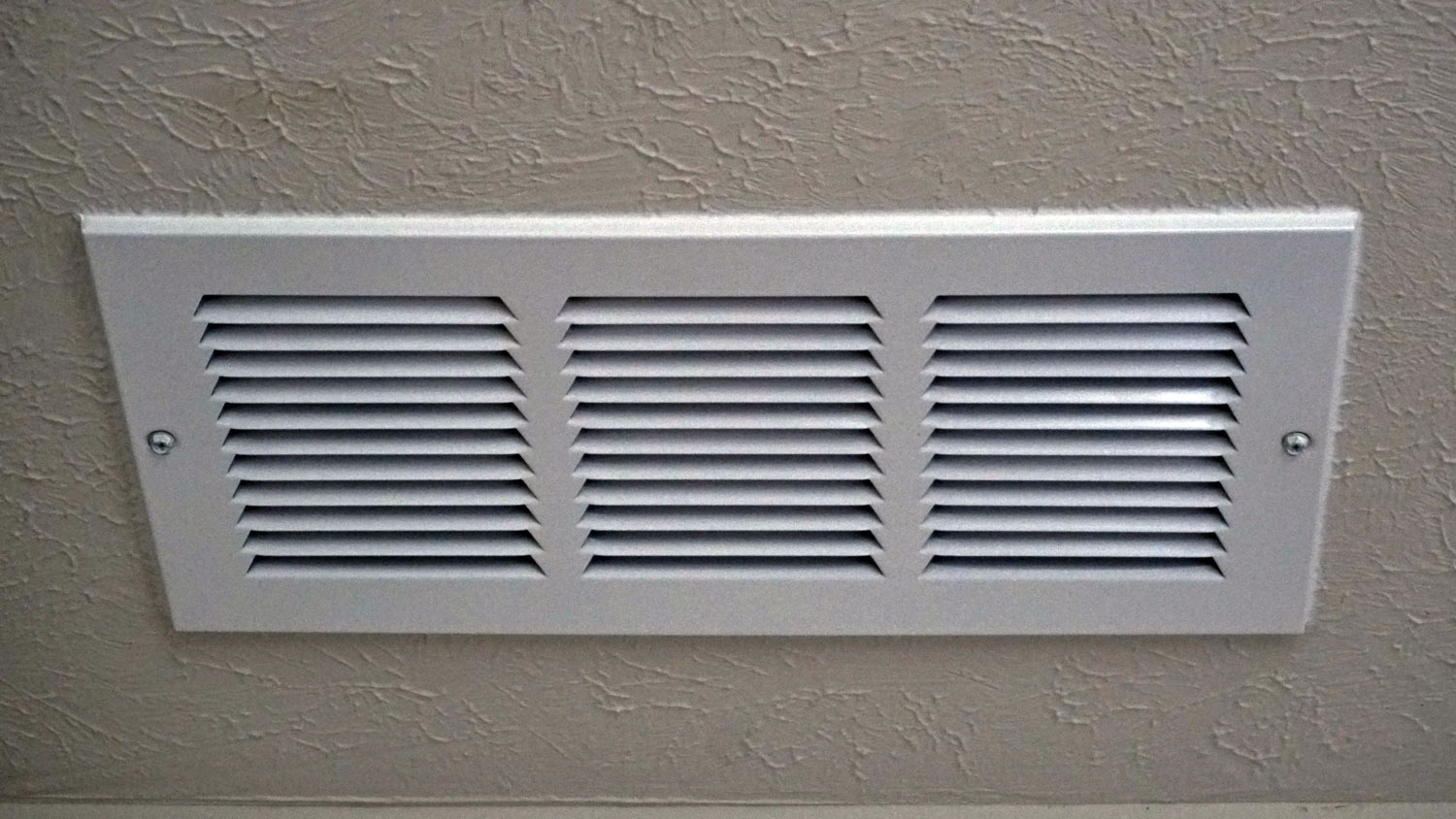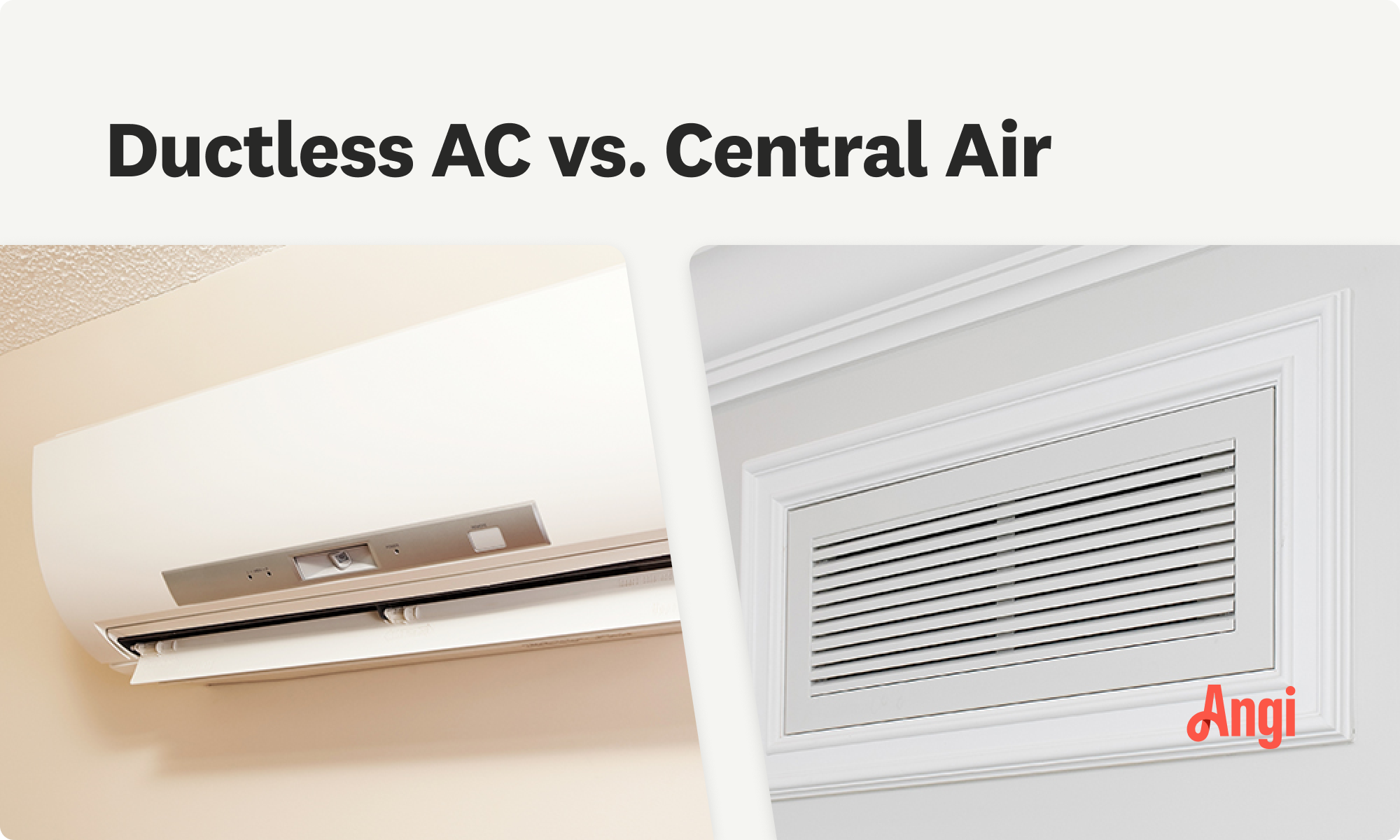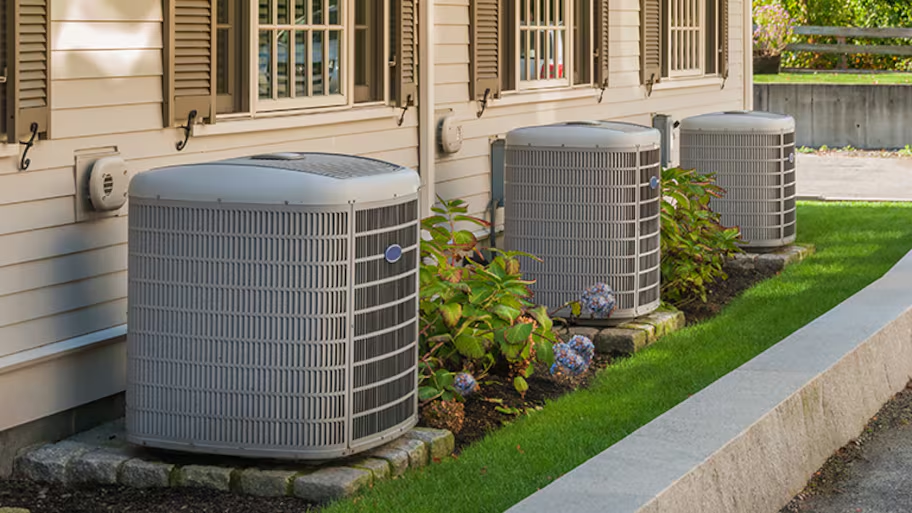
When your heat goes out, it can cause a bit of a panic. But knowledge is power, so let's go over radiator repair costs before that happens.
There’s more than one way to keep cool


Both systems function similarly.
Ductless air offers more flexibility and precise control.
Ductless units are expensive and take up wall or floor space.
Central air is hidden, but ducts are expensive if not already in place.
If your home already has ducts, central air is far more affordable.
Considering an air conditioning upgrade? Your primary decision will likely be newer ductless AC vs. central air with traditional ducts. The best fit will depend on your specific home’s needs, your budget, and the level of comfort control you're after. This guide breaks down the pros and cons of each so you can discuss your options with local HVAC pros.
Ductless AC and central air function similarly, but with a few main differences. Ductless mini-splits require little maintenance but are more expensive and take up space on the wall or floor wherever they’re installed. Central AC units are less expensive and virtually invisible, but they require annual maintenance and ductwork that can be expensive if it’s not already in place.

A ductless AC system consists of an outdoor compressor unit connected to one or more indoor air-handling units, or heads, via a slim cable. Each head is mounted on the wall of a single room or zone and can only control that room’s temperature.
| Pros | Cons |
|---|---|
| Doesn’t require ductwork | Higher initial installation cost |
| Runs more quietly than central air | Visible wall mounts may be an aesthetic issue |
| Allows control over individual rooms | Must clean filters every few weeks |
| Highest efficiency ratings | Less effective for cooling a whole house |
Best for:
Older homes without existing ductwork
Individual rooms in which the temperature is hard to maintain
Homeowners who want precise temperature control in each room
Garages, finished basements, attic bedrooms, and additions
The primary benefit of ductless AC systems is in the name—they don't require any ductwork, making them ideal for older homes where ducts were never installed or for new additions not connected to a home's central air system.
Each room with an AC unit has an individual head that allows precise temperature control, often via remote control. Ductless systems use little energy, giving them some of the highest efficiency ratings in the HVAC industry.
Despite their small size, ductless AC systems have a much higher initial installation cost than central air units. It can also be harder to find qualified pros for the installation. Also, while any AC system requires maintenance, the filters in a ductless system need to be cleaned every few weeks.
Many homeowners dislike the look of ductless systems. The entire system is visible, including the wall-mounted indoor heads and the outdoor cooling and drainage lines.

A central air conditioning system cools outdoor air at a central location, usually an outdoor handler, then distributes it throughout a home via a system of fans, ducts, and vents. Once the cool air circulates and warms, it flows back outside to be released.
| Pros | Cons |
|---|---|
| Virtually invisible | Requires annual professional maintenance |
| Easy and affordable to install with existing ducts | If needed, ductwork is expensive |
| Adds to home’s resale value | Cools entire home, even rooms not in use |
| Integrates easily with air quality products | May result in higher utility bill |
Best for:
Homeowners replacing an existing central air system
Homeowners who want to cool their entire home
Homes with existing ductwork
Large homes of more than 2,000 square feet
If you're simply replacing an existing central air unit, the HVAC replacement cost for a new unit will be far more affordable than for a ductless system. The system is virtually invisible, with ducts hidden behind walls and vents, taking up no living space.
Central air systems also integrate easily with common air quality products such as humidifiers, dehumidifiers, and air purifiers. These increase a home's air quality and reduce allergens, dust, and odors.
Despite the advantages of central air, the upfront cost of a new central air system can be prohibitive if your home lacks existing ductwork. However, it may still be worthwhile if you have a very large home with newer construction.
Ducts also require regular cleaning and maintenance to avoid costly repairs, and an annual checkup is recommended for the entire system. Central air lacks the precise control offered by mini-splits. Instead, you'll be cooling your entire home at once, including rooms you aren’t using.

Consider the following when deciding which AC system is best for your home and needs.
Indoor central air is virtually invisible, with hidden ducts and vents that take up no living space. Installers mount ductless mini-splits on walls in every room you want to cool.
There are far more models and brands available for central air systems, and they integrate more easily with air quality products like humidifiers, dehumidifiers, and air purifiers. Ductless units have air filters, but they're less powerful and require frequent cleaning and replacement.
When it comes to cooling a large home with a footprint of larger than 2,000 square feet, central air is the more powerful and efficient option. If you want to cool more than five rooms with mini-splits, you'll need to install additional outdoor compressors.
The price you pay for either system depends mostly on whether you have existing ductwork. Ductless units are more expensive on their own, but installing new ducts where there aren't any costs even more. Ductless units also offer better efficiency, which means lower cooling bills.
Every type of AC requires maintenance. With a ductless system, you'll clean and replace filters more often and may need to maintain a condensate pump for drainage. With central air, you'll need to clean and maintain ductwork and schedule annual checkups for your entire system.
Ductless systems are generally quieter than central air, but not always. Ask your local air conditioner installer for more detail about the noise level of the systems you're considering.
The best ductless systems are more efficient than the best central air systems. Plus, ductless systems operating as heat pumps are more efficient than a furnace for heating a home.
Ductless mini-splits can cool nearly any space, including rooms that are hard to reach with central air, like garages, basements, attics, and additions. They also offer precise temperature control in each room, allowing you to cool only certain parts of your home for better efficiency.
From average costs to expert advice, get all the answers you need to get your job done.

When your heat goes out, it can cause a bit of a panic. But knowledge is power, so let's go over radiator repair costs before that happens.

Switching from oil to gas heating could impact your savings. This guide will help you understand the cost to convert from an oil furnace to a gas furnace.

HVAC replacement costs depend on a lot of factors, like unit type, size, and labor. See what you can expect to pay for HVAC replacement here.

Condensation on air vents suggests something is wrong with your HVAC system. Learn how to stop condensation on air vents through preventive measures.

Energy bills rising? Here’s how to perform a DIY duct leakage test to locate any damage in your ductwork and restore your energy-efficient home.

Learning how to secure a window AC unit will avoid personal injury and damage to your home. It will also protect against theft and break-ins.